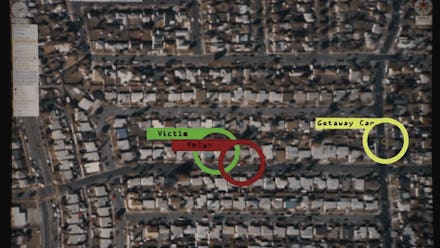Police Are Experimenting With "Live Google Earth" to Watch Crime as It Happens

Is this next-level law enforcement or another step towards Big Brother?
That is the question coming out of Los Angeles, where for the past year, the city's police department has been experimenting with new, state-of-the-art surveillance technology. The Los Angeles County Sheriff's Department, with the help of an Ohio company called Persistent Surveillance Systems, rolled out a test in Compton — flying small civilian aircraft outfitted with high-powered cameras that can record video in real-time.
Like something straight out of a sci-fi flick, the cameras allow the police to track suspects from the air, pause video, rewind and fast forward — essentially creating a live-updated version of Google Earth.
"We literally watched all of Compton during the time that we were flying, so we could zoom in anywhere within the city of Compton and follow cars and see people," said Ross McNutt, the founder of Persistent Surveillance. "Our goal was to basically jump to where reported crimes occurred and see what information we could generate that would help investigators solve the crimes."
Image Credit: Gizmodo
"Our whole system costs less than the price of a single police helicopter and costs less for an hour to operate than a police helicopter," said McNutt. "But at the same time, it watches 10,000 times the area that a police helicopter could watch."
So why have we not heard of this until now? The Compton test was conducted in secret so as not to alarm people. There have also been previous tests in Baltimore and Dayton.
"The system was kind of kept confidential from everybody in the public," said Sgt. Doug Iketani, who supervised the Compton project. "A lot of people do have a problem with the eye in the sky, the Big Brother, so in order to mitigate any of those kinds of complaints, we basically kept it pretty hush-hush."
Image Credit: Getty
And if you're concerned about the police flying aircraft over your house to watch you, you don't need to worry just yet — though the PSS system is helpful when the police are tracking someone in pursuit, the video is not high-resolution enough to capture images that can stand up in court. It will be years before the police can implement a functional air surveillance system. For now, however, it could become an invaluable tool for police forces to monitor large areas.
Of course, technology like this immediately raises questions of privacy versus security. As the often mis-attributed Benjamin Franklin paraphrased quote says, "Those who surrender freedom for security will not have, nor do they deserve, either one" (it's not even entirely clear that he ever actually said this). Take New York City, a place already monitored by roughly 3,000 24-hour closed circuit TVs, which have certainly caught flack since their 2012 unveiling. There's something off-putting about having our every move constantly monitored by drones, and many agree it's a potential power that shouldn't be taken lightly. Time will tell how these technologies are applied to American citizens, but for now, it's at least impressive that these capabilities exist and are so far being used for good.
Watch the report by the Center for Investigative Reporting to see the technology in action: